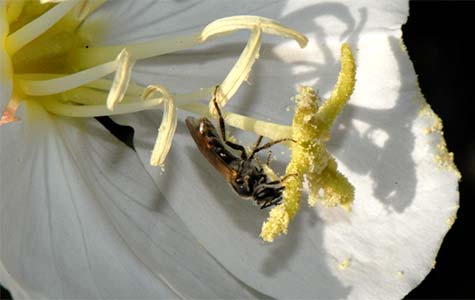
We commonly think of floral scent for its role in attracting pollinators, but it can also be a cue for floral and seed predators. This National Science Foundation-funded project, Landscapes of Linalool: Scent-Mediated Diversification of Flowers and Moths Across Western North America, integrates chemical ecology and comparative genomics to explore the impact of past selective pressures on current patterns of diversity in nonmodel organisms including evening primroses, hawkmoths, bees, and micromoths. This project focuses on how floral traits, including floral scent, mediate interactions between flowering plants, pollinators, and enemies and the impacts on diversification at the population, species, and higher taxonomic levels. Onagraceae (evening primrose family) is one of the most species-rich families of night-blooming plants in North America. Many Onagraceae, particularly species in tribe Onagreae, produce floral scent that likely dictates the primary biotic drivers impacting plant fitness, including legitimate pollinators (hawkmoths, bees) and floral and seed predators (Mompha moths). The same floral characteristics (color, shape, scent) that attract pollinators are also suspected to attract floral antagonists to host plants. Mompha is one such moth genus that specializes on Onagraceae. Three dimensions of biodiversity will be integrated through studies of 1) floral trait variation, 2) its genetic basis, and 3) their roles in driving patterns of diversity in Onagreae and Mompha. (Skogen, Fant, Wickett, Diaz-Martin, and outside collaborators).

